|
1. Spectacular Olympic Opening Ceremony
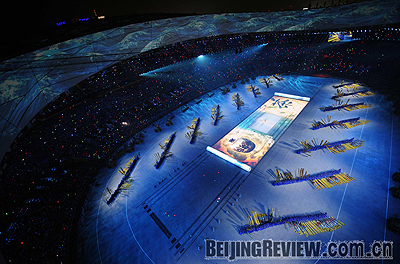
The opening ceremony of the 29th Olympic Games was held in Beijing on August 8. Well-known Chinese Director Zhang Yimou, famous for displaying Chinese elements in his movies, directed the ceremony. With spectacular performances and high technology, the Chinese civilization of 5,000 years was presented to the entire world at the ceremony. In a huge unrolled scroll, a form of books in ancient China, the four great inventions of China-papermaking, moveable-type printing, compass and gunpowder, the Silk Road and other highlights of the Chinese culture were shown to a global audience.
More than 80 world leaders, joined by an audience of 90,000, watched the dazzling visual feast at the newly built National Stadium of China, known as Bird's Nest. Over 14,000 persons participated in the performance, and billions of people around the world watched the spectacle on TV.
2. World Heritage List Enlarged
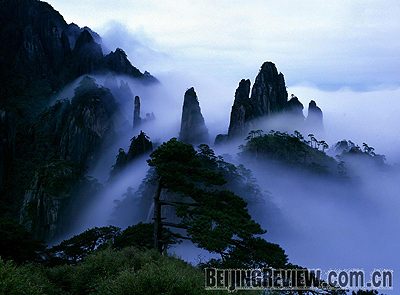
On July 6, the 32nd Session of the World Heritage Committee approved adding Tulou, the unique residential architecture of Fujian Province in southeast China, to the World Heritage List of the United Nations Educational, Scientific and Cultural Organization as a cultural site. On the following day, the scenic area of the Sanqingshan Mountain in central China's Jiangxi Province was also included on the list. This brings the number of the world heritage listings in China to 37.
Built between the 12th and 20th centuries, Tulou is the typical dwelling house of the Hakka people. Mainly made of adobe and in round or square shapes, Tulou houses are some of the most unique large-scale residential compounds in the world. The Tulou architecture reflects the folk customs and unique living style of the Hakka people.
The Sanqingshan Mountain was included as a world heritage site for its exceptional scenic quality. Covering an area of 22,950 hectares, the scenic zone of the Sanqingshan Mountain presents unique granite peaks and pillars featuring a variety of unusual shapes, rich vegetation and ever-changing weather patterns.
3. World Translation Congress
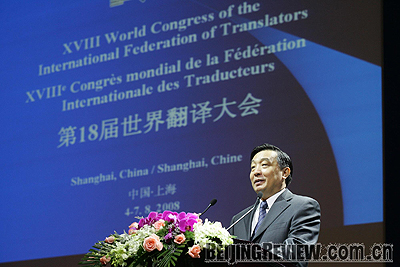
The 18th World Congress of the International Federation of Translators (IFT) was held in Shanghai on August 2-7, the largest IFT world congress ever. This was the first time IFT held its world congress in an Asian country. More than 1,500 scholars in translation from over 70 countries and regions attended the meeting and discussed related issues, such as the culture and the industrialization of translation and the education of translation professionals.
With a theme of Translation and Cultural Diversity, the congress was held against the background that the United Nations proclaimed 2008 the International Year of Languages, based on a pursuit to promote, protect and preserve the diversity of languages and cultures globally and strengthen the mutual understanding among the peoples of all countries.
4. Music Bridges Cultures
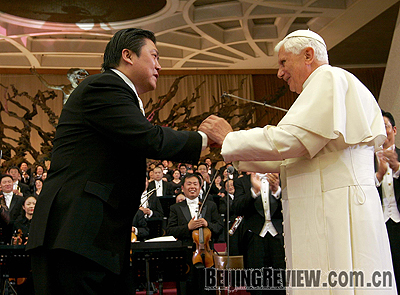
The China Philharmonic Orchestra, accompanied by the Shanghai Opera House Chorus, performed at the Paul VI Audience Hall of the Vatican on May 7 during their European tour. Pope Benedict XVI was in the audience. It was the first time for a Chinese orchestra to perform in the Vatican.
During the one-hour performance, Mozart's Requiem and the well-known Chinese folk song Jasmine Flower were presented. The concert is unprecedented, as Beijing and the Vatican have had no diplomatic ties since 1951. As a people-to-people cultural exchange activity, the performance was seen by the media to be a sign that the relations between Beijing and Vatican are moving forward through cultural and art exchanges.
5. Exhibitions Tell Stories
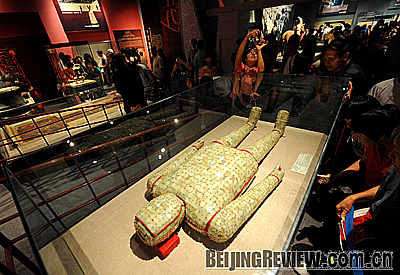
From July to October, a series of cultural exhibitions were held in Beijing. It was seen as a cultural feast China provided to world visitors during the Beijing Olympic Games. More than 1,000 cultural relics and treasures from over 70 provincial museums around China were collectively displayed at these exhibitions, which is unprecedented in China's history.
From the terracotta warriors found in the mausoleum of Emperor Qinshihuang (259-210 B.C.) and the jade dress sewn with gold thread of the Han Dynasty (202 B.C. -A.D. 220), to some ancient classic paintings and bronze wares, visitors got to appreciate a number of rare cultural relics that have not even been seen by most Chinese.
6. Hollywood Blockbuster Stimulates Debate
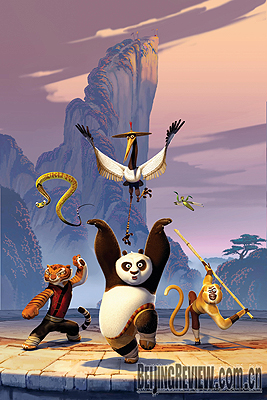
Hollywood blockbuster Kungfu Panda turned out to be a big hit in the China market, with its box office takings exceeding 135 million yuan ($19 million) in three weeks.
From the lead character (a panda) to the settings and music, the movie absorbed a lot of Chinese cultural elements that were perfectly combined with Hollywood filmmaking skills. Different from previous Hollywood animated movies with Chinese elements like Mulan or Kungfu King, which just touched the surface of Chinese culture or only used Chinese elements as a symbol, the creators of Kungfu Panda had done a lot of homework and grasped the true value behind Chinese culture.
The huge box office haul of the film in China sparked a heated debate on how Chinese should react when their culture is adapted to foreign works and then makes such an impact around the world. They also debated what Chinese artists could do to better exploit their own rich national cultural heritage. Most Chinese artists agree that China needs a mechanism to industrialize its traditional culture and make cultural products oriented to the world market.
7. Ancient Books Return
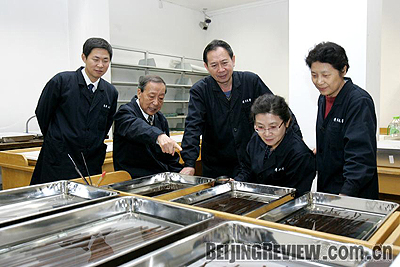
More than 2,100 pieces of bamboo strips that were proved to date back to the Warring States Period (475-221 B.C.) of China were donated to the prestigious Tsinghua University in July by an alumnus of the university. Archaeologists and historians have found that the ancient items include a number of important ancient Chinese classics and historic documents, many of which have never been seen before. They said these documents have great importance in studying the history and traditional culture of China.
One of the most important discoveries is the ancient classic Shangshu, or Book of History, a collection of ancient historical documents said to be mainly compiled by Confucius (551- 479 B.C.), one of the greatest philosophers in ancient China and the founder of Confucianism.
8. Cultural Icon Dies
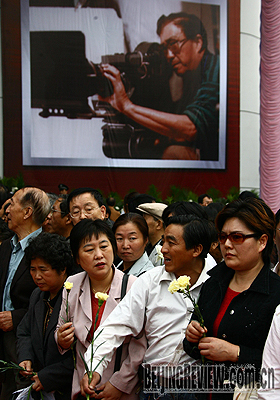
Film director Xie Jin passed away on October 18, aged 85. Heralded as the iconic representative of the third generation of China's film directors, Xie enjoyed the highest status in the heart of Chinese audiences. Well-known for his realistic creative style, Xie had finished more than 30 films in over 50 years, most of which mirror the development of Chinese society and focus on the reality of life.
Influencing generations of Chinese, his films are considered classics and cover the most important periods of China, dating back to 1949. Chinese filmmakers believe that Xie's unique film narrative style, known locally as the Xie Mode, has been a cornerstone of Chinese films and is irreplaceable.
9. Big Discovery in Iron Box
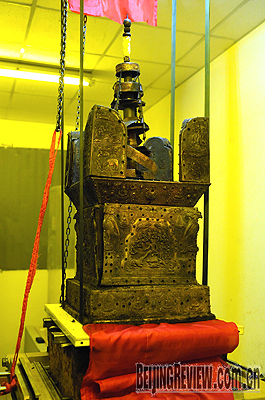
An ancient reliquary that has lain under the earth for over 1,000 years was unearthed in Nanjing, capital of east China's Jiangsu Province, on August 7. The relic, used as a shrine, was found in an iron box discovered in an underground palace located in the ruins of an ancient temple in the city. It was believed to be one of the over 80,000 pagoda-shaped shrines made during the reign of King Asoka of India (273-236 B.C), in which the sarira of Sakyamuni, or the Buddha, called shelizi in Chinese, were enshrined.
Archaeologists said that it is the largest seven-treasure King Asoka reliquary (made of seven kinds of materials such as gold, silver, colored glaze, agate and amber) found in China to date.
After three months, the 1.1-meter-high pagoda was successfully removed from the iron box on November 22. Currently, the relic is undergoing restoration. On whether or when the pagoda could be opened, archaeologists said it is still uncertain and they would listen to the opinions of the religious circle.
10. National Library Expanded
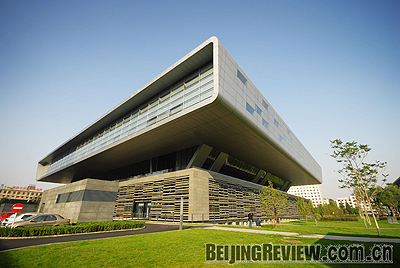
The second phase of the construction project of the National Library of China (NLC), a new library, was opened to the public on September 9. Covering an area of 80,538 square meters, the new library can sit 2,900 readers and accept 8,000 visitors a day. The new addition makes the total construction area of the NLC 250,000 square meters, ranking third in the world. Designed by a German architectural firm, the modern library is the largest collection base for Chinese documents in the world.
On the same day, the National Digital Library also started to accept visitors. As the first library of its kind, the digital library provides the most advanced information network service to world readers. Up to June, the storage capacity of digital resources in the library was 200 terabyte. | 